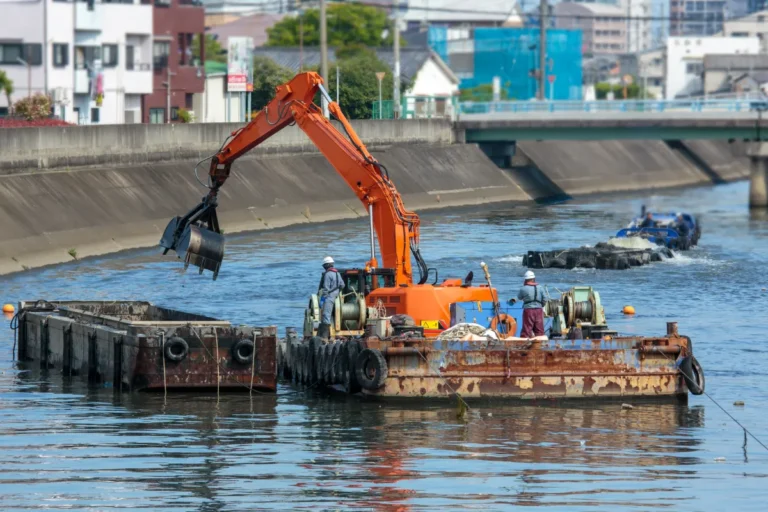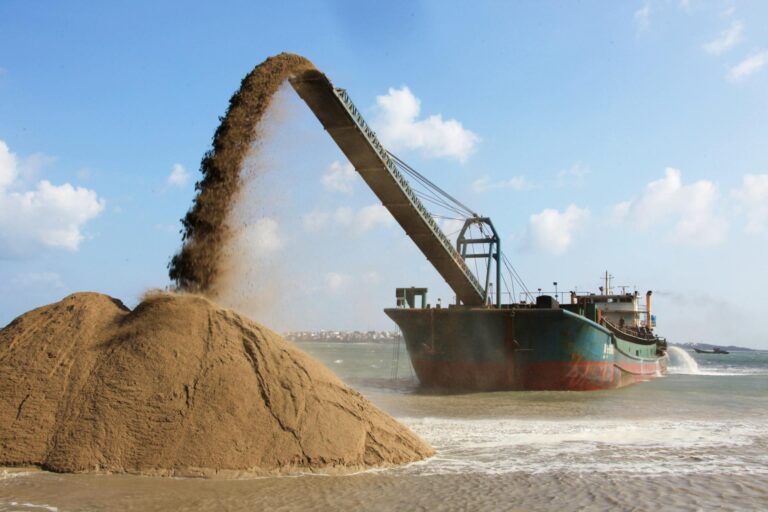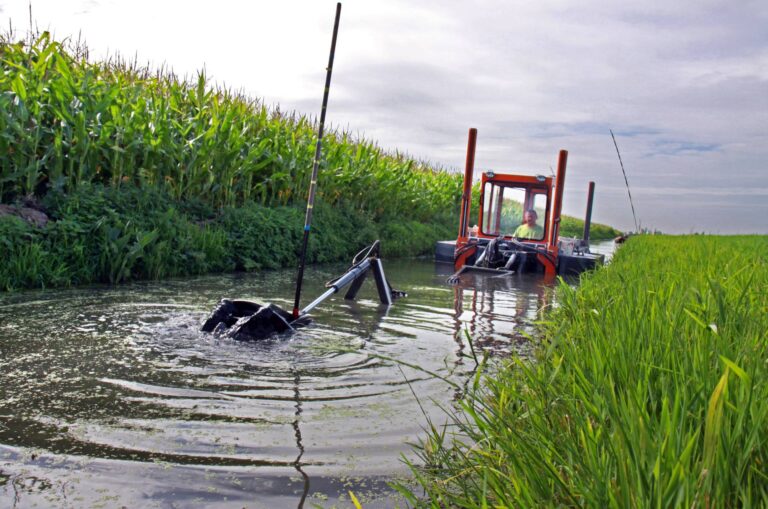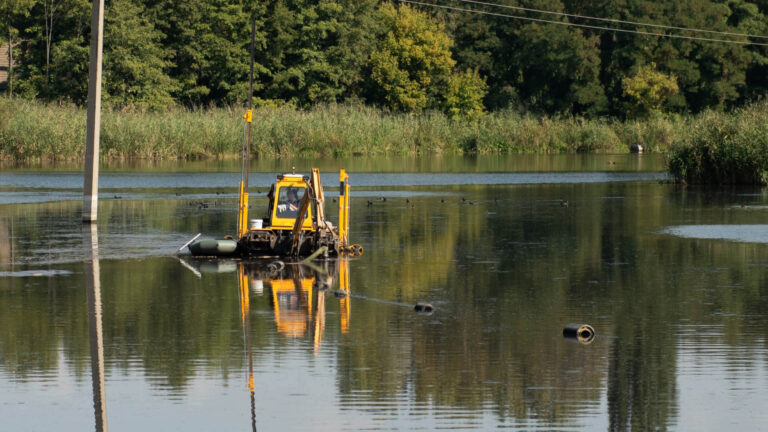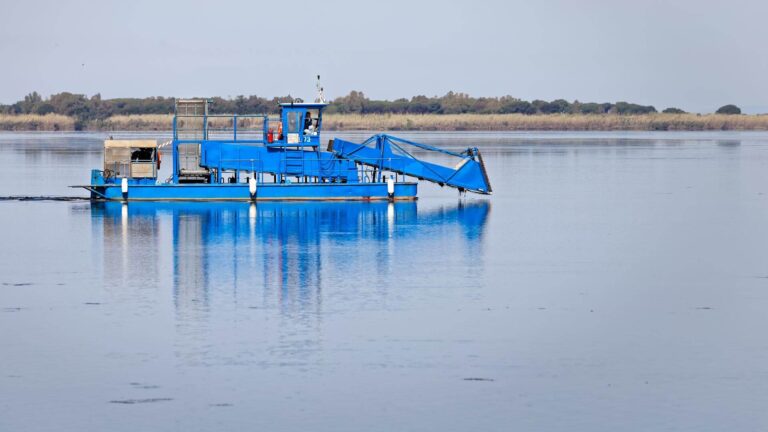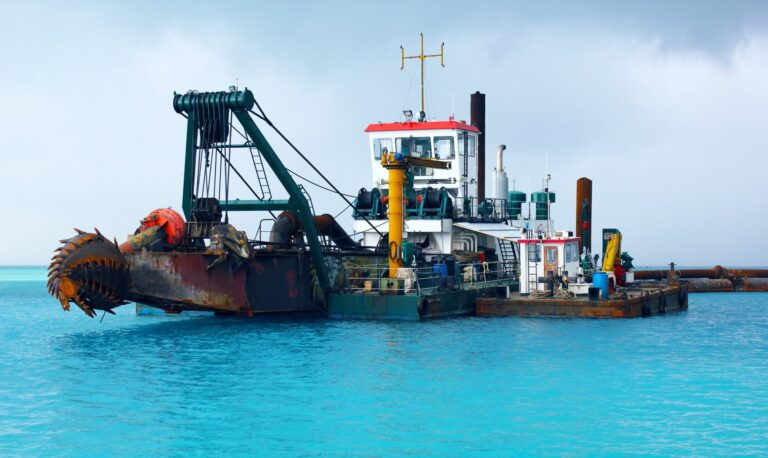Rivers are essential to human civilization, serving as critical arteries for transportation and irrigation and supporting rich ecosystems. They facilitate trade, supply fresh water for agriculture, and sustain diverse aquatic and terrestrial life. However, sediment accumulation in rivers has become a significant challenge over time, leading to issues such as reduced water flow, increased flood risks, and impediments to navigation. These challenges can disrupt the delicate balance of ecological systems and hinder economic activities dependent on rivers.
River dredging offers an effective solution to address these issues. By removing sediment and debris from riverbeds, this process helps restore the natural flow of water, preventing flooding and enhancing navigability. The benefits of waterway dredging extend beyond flood prevention; it also plays a vital role in supporting trade and transportation by maintaining safe passage for vessels.
In addition, similar dredging techniques are often employed to dredge river sections and dredge for lake restoration. Both processes ensure the preservation of water bodies by improving water flow and reducing the risk of environmental degradation.
This blog will explore the importance of river dredging, highlighting its techniques, benefits, challenges, and connections to broader efforts to dredge river areas and dredge for lake restoration. Through sustainable practices and innovative solutions, dredging continues to serve as a key tool in managing and protecting vital waterways.
What is River Dredging?

River dredging is the process of removing sediment, debris, and other materials from a river’s bed to restore its depth and flow capacity. Over time, natural sedimentation and human activities can lead to the accumulation of materials in riverbeds, narrowing and shallowing channels. This buildup can increase flood risks, reduce navigability, and disrupt ecosystems. waterway dredging is essential to maintaining rivers’ functionality and safety while also ensuring their ecological health.
The primary objectives of river dredging are to prevent sediment buildup, manage flood risks, and maintain navigability. By removing excess sediment, the river’s flow capacity is improved, reducing the likelihood of floods in nearby areas. Additionally, efforts to dredge river sections ensure that waterways remain accessible for commercial and recreational vessels, supporting trade and tourism activities.
River dredging differs from other methods, such as those used for lake restoration. While lake dredging often focuses on improving water quality, removing stagnant sediments, and enhancing habitats, waterway dredging is more dynamic. Rivers have continuous flow, which requires careful planning to remove sediment without disrupting water movement. Techniques for dredging river areas must consider factors such as sediment type, current velocity, and potential downstream impacts.
In comparison, efforts to dredge for lake restoration often involve stagnant bodies of water with limited flow, allowing for different sediment removal methods. Both processes, however, share the common goal of preserving and improving water systems for ecological and human needs.
In conclusion, waterway dredging is vital to maintaining healthy, functional waterways. By preventing flooding, supporting navigation, and addressing sedimentation, efforts to dredge river areas ensure that rivers continue to serve as lifelines for communities and ecosystems.
Importance of River Dredging for Flood Prevention
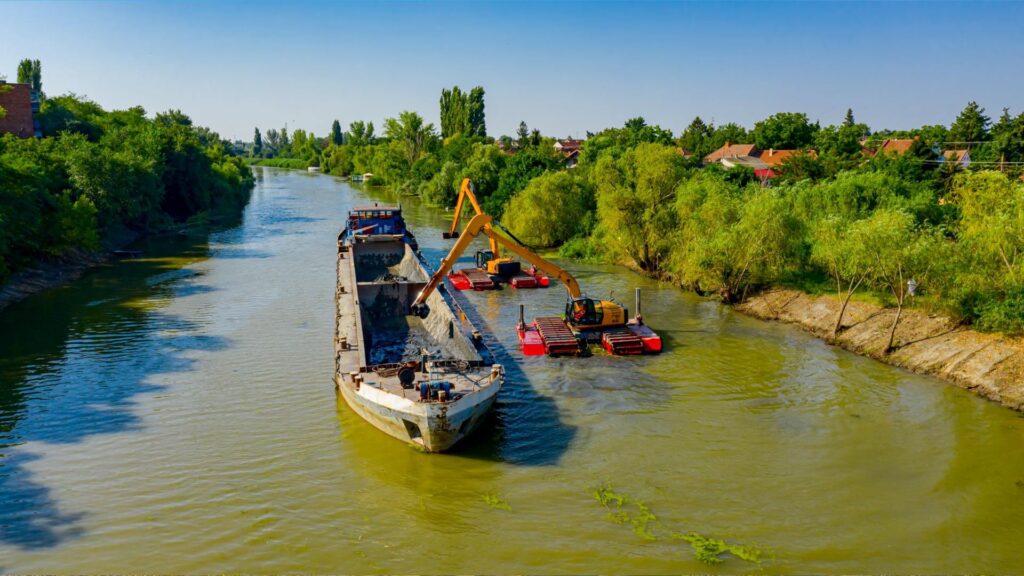
Sediment accumulation in riverbeds is a natural process, but when left unmanaged, it can significantly narrow river channels, reducing their capacity to handle water flow. This narrowing of channels increases the risk of flooding, particularly during heavy rainfall or snowmelt seasons. Communities near flood-prone rivers are especially vulnerable, as overflowing water can devastate homes, infrastructure, and agricultural lands. Regular river restoration dredging and efforts to dredge river sections are critical tools for mitigating these risks and protecting both human and natural environments. By prioritizing projects to dredge river areas, stakeholders can ensure that rivers remain safe and functional for surrounding communities.
River dredging is vital in deepening and widening river channels, improving their ability to carry water efficiently. By removing excess sediment, the flow capacity of the river is restored, reducing the likelihood of water spilling into adjacent areas. In addition to mitigating flooding, waterway dredging ensures that rivers remain functional as critical waterways for communities and industries.
Several flood-prone regions around the world have benefited from regular waterway dredging efforts. For example, the Mississippi River in the United States and the Ganges River in India rely on consistent dredging operations to manage flood risks and maintain navigability. These efforts highlight the importance of maintaining sediment-free channels for both safety and economic activity.
The strategies used to dredge river areas also contribute to broader flood mitigation plans, working in tandem with levees, dams, and water diversion systems. Lessons from these projects often inform other dredging efforts, such as those undertaken to dredge for lake restoration, where similar sediment removal techniques are employed to manage water flow and reduce flooding risks.
In conclusion, river restoration dredging is a crucial preventive measure against floods. It ensures that waterways remain safe, efficient, and capable of supporting surrounding ecosystems and communities.
Enhancing Navigation through River Dredging
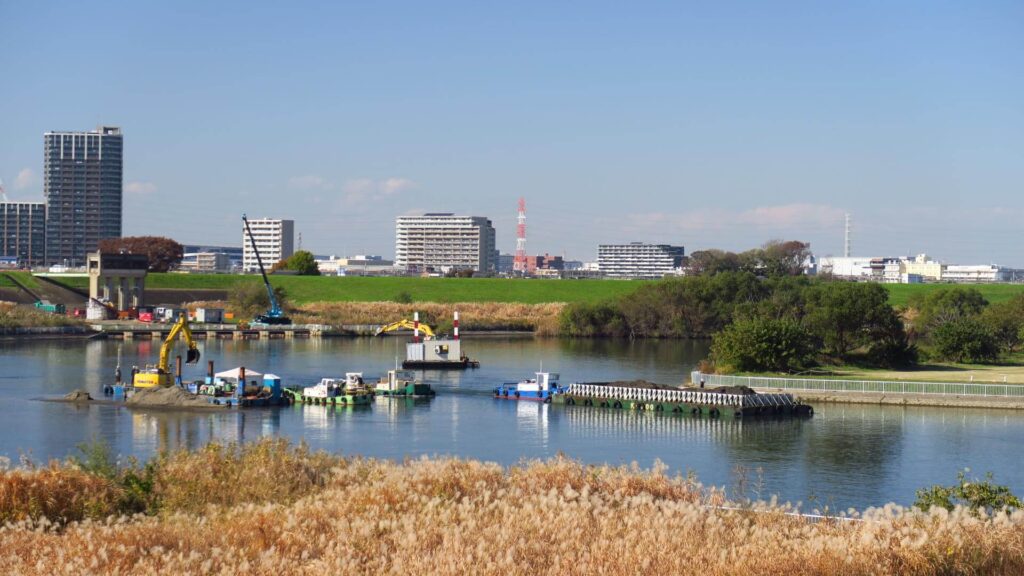
Sediment buildup in rivers poses significant challenges for both commercial and recreational navigation. Accumulated silt, sand, and debris can reduce water depth, making it difficult for boats and ships to navigate safely. In extreme cases, sediment deposits create obstacles that completely block certain river sections, disrupting transportation and trade. These challenges highlight the critical need to dredge river areas to restore navigability. Regular river restoration dredging ensures that waterways remain functional, supporting the safe movement of vessels and sustaining vital economic activities linked to transportation and trade.
River dredging is crucial for improving river depth and removing obstacles from the channel. By clearing sediment and debris, dredging restores the river’s navigability, allowing vessels to travel efficiently. This process is particularly important for commercial shipping, where delays caused by shallow or obstructed rivers can lead to economic losses. Recreational boating and tourism also benefit from dredging operations, as deeper, obstacle-free rivers enhance safety and enjoyment for water-based activities.
The economic importance of maintaining navigable rivers cannot be overstated. Rivers are lifelines for trade and transportation, facilitating the movement of goods and raw materials to industries and ports. Without regular waterway dredging, businesses reliant on waterway logistics face increased costs and reduced efficiency.
Lessons from successful projects that dredge river areas for navigation provide valuable insights. For instance, the Rhine River in Europe and the Amazon River in South America are regularly dredged to maintain their critical roles in trade and tourism. These efforts often share techniques with projects designed to dredge for lake restoration, as both involve sediment removal to optimize waterway functionality.
In conclusion, waterway dredging is essential for ensuring navigable waterways, supporting economic growth, and enabling safe and efficient river-based transportation. By prioritizing these efforts, stakeholders can preserve the functionality and economic value of rivers for generations to come.
Techniques Used in River Dredging
River dredging employs a range of techniques to remove sediment and maintain the functionality of waterways. Each method is tailored to specific project requirements, taking into account factors like sediment type, water depth, and environmental considerations. These techniques are not only used to dredge river areas but can also be adapted to dredge for lake maintenance, ensuring the preservation of diverse aquatic ecosystems.
Mechanical Dredging
Mechanical dredging is one of the most common methods for river dredging. This technique uses heavy equipment, such as excavators and clamshell dredgers, to scoop sediment from the riverbed physically. It is particularly effective for removing compacted materials like clay or gravel. While mechanical dredging is ideal for small, targeted operations, it requires careful management to minimize sediment dispersion.
Hydraulic Dredging
Hydraulic dredging is a more efficient method for large-scale sediment removal. Suction dredgers pump sediment and water through pipelines to designated disposal or storage sites. This technique is highly effective for removing fine particles such as silt and sand, making it a preferred option for extensive river restoration dredging projects. It is also frequently used to dredge lakes for restoration, where sediment buildup similarly impacts water quality and depth.
Environmental Dredging
Environmental dredging focuses on minimizing ecological disruption. This method employs precision techniques and specialized equipment to remove contaminated sediment carefully, protecting aquatic habitats.
The techniques used for river dredging are versatile and can be adapted to a variety of water systems. Whether applied to dredge river channels for navigation or dredge for lake restoration to improve ecosystem health, these methods play a critical role in maintaining functional and sustainable waterways.
Environmental Considerations in River Dredging
River dredging, while essential for flood prevention and navigation, can have significant environmental impacts on aquatic ecosystems and biodiversity if not carefully managed. The removal of sediment and debris can disturb habitats, affect water quality, and disrupt the delicate balance of aquatic life. Sediment resuspension during dredging may increase turbidity, reduce light penetration, and harm fish and plant populations. These potential risks make it critical to adopt strategies that balance the need to dredge river areas with the preservation of ecosystems.
Eco-Friendly Dredging Techniques
One of the most effective strategies to mitigate environmental risks is the use of eco-friendly dredging techniques. Methods such as precision dredging minimize unnecessary sediment removal and disturbance. Additionally, environmental dredging focuses on removing only contaminated or harmful sediment, reducing the impact on aquatic habitats. These techniques are also applied in efforts to dredge for lake restoration, where the goal is to improve ecological health without damaging biodiversity.
Environmental Impact Assessments
Another key strategy is conducting thorough environmental impact assessments (EIAs) before initiating river dredging projects. EIAs evaluate potential risks to ecosystems and recommend measures to minimize harm. By identifying vulnerable species and habitats, project teams can adjust dredging methods and schedules to reduce disruption.
River dredging projects should prioritize balancing operational objectives and environmental preservation. Lessons learned from projects to dredge for lake restoration can inform river restoration dredging practices, ensuring that ecosystems remain resilient.
In conclusion, river dredging can be conducted sustainably by employing eco-friendly techniques and rigorous planning. These measures protect biodiversity and maintain the health of aquatic ecosystems, ensuring ecological and economic benefits.
Challenges in River Dredging
River dredging is critical for maintaining navigable waterways and preventing flooding, but it also presents several challenges that require careful planning and execution. One of the most significant challenges is the high cost of dredging operations and their long-term maintenance. The equipment, labor, and disposal of dredged materials contribute to substantial expenses, which can strain budgets for public and private stakeholders.
Technological and logistical challenges also pose hurdles in river restoration dredging projects. Rivers with complex sediment profiles, such as those containing hard substrates or a mix of contaminants, require advanced dredging equipment and techniques. Additionally, accessing certain river areas, especially in remote or heavily populated regions, can complicate logistics. These challenges often call for innovative solutions, some of which are informed by experiences in projects designed to dredge for lake restoration. For example, precision dredging techniques developed for lakes can be adapted to handle specific sediment characteristics in rivers.
Regulatory hurdles further complicate river dredging efforts. Strict environmental laws require permits and compliance with standards, often delaying project timelines. Community concerns over the environmental impact of dredging can also generate opposition, requiring proactive communication and the use of eco-friendly practices.
Lessons from projects that dredge for lake restoration, such as the use of environmental impact assessments and targeted dredging methods, can inform river dredging solutions. By integrating these approaches, stakeholders can address challenges while balancing operational needs and environmental preservation.
In conclusion, while river restoration dredging is essential, overcoming its challenges requires innovative techniques, regulatory alignment, and lessons drawn from other successful dredging initiatives.
Conclusion
River dredging is an essential process for preventing floods and maintaining navigable waterways. Removing sediment buildup enhances water flow, reduces the risk of flooding, and provides safe passage for commercial and recreational vessels. These benefits are vital not only for local communities but also for economies that rely on rivers for trade and transportation. Regular dredging operations support both the functionality and sustainability of rivers, making river dredging an indispensable tool in waterway management.
Sustainable practices and advanced technologies must be at the forefront of river restoration dredging efforts. Eco-friendly dredging techniques and precision tools can help minimize environmental disruption while achieving project objectives. Similarly, lessons from projects that dredge for lake restoration demonstrate how careful planning and innovation can protect ecosystems while addressing sedimentation issues. Stakeholders must adopt these practices to ensure river dredging contributes positively to both environmental and economic goals.
Governments, industries, and communities must prioritize investments in river restoration dredging and related efforts to dredge river areas and dredge for lake restoration. These actions not only enhance safety and commerce but also preserve the health of aquatic ecosystems for future generations. By embracing sustainable approaches, we can ensure that waterways remain vibrant, functional, and resilient in the face of growing environmental and economic demands.


